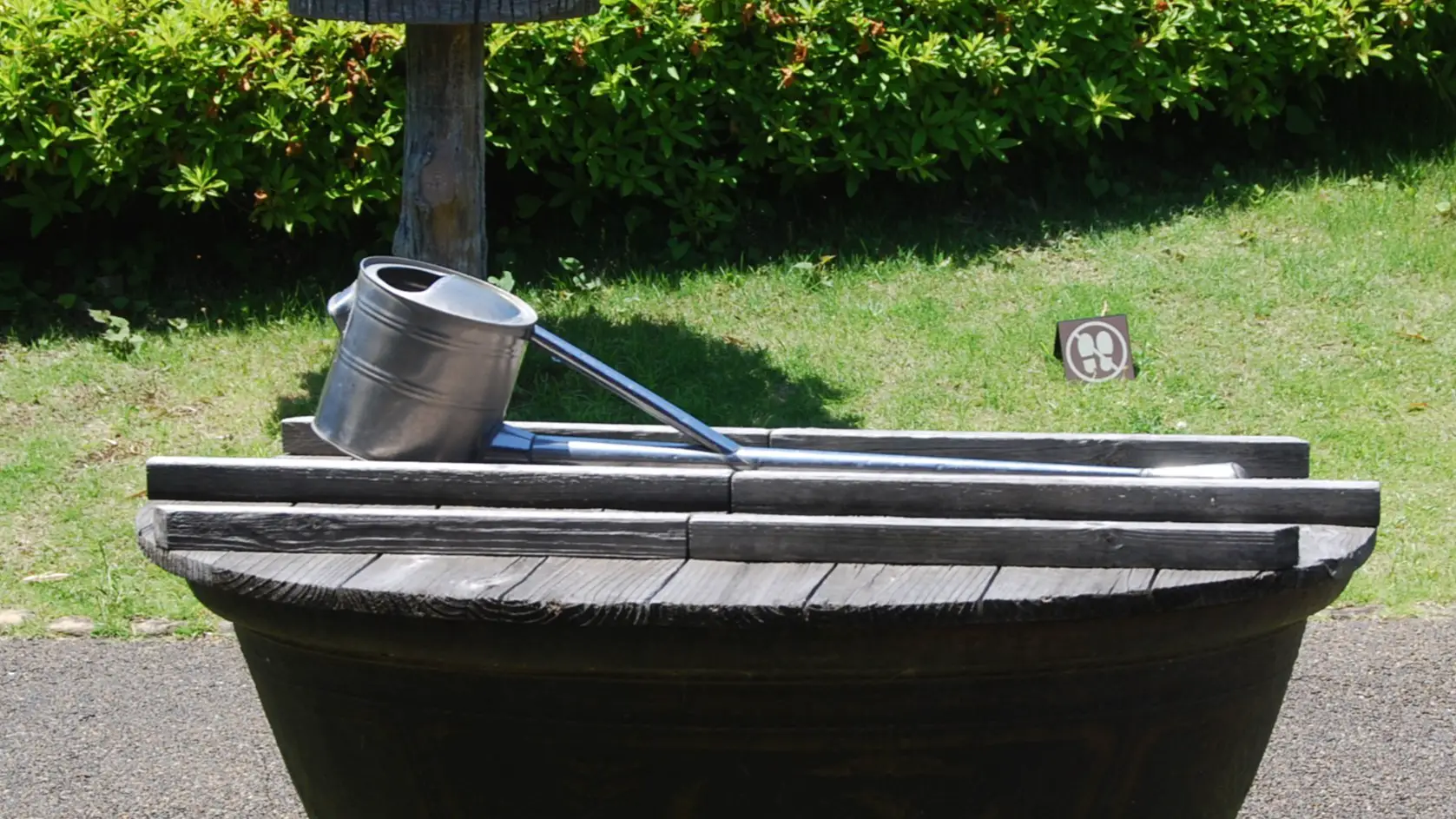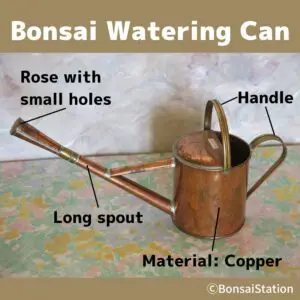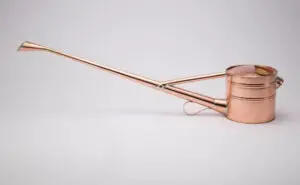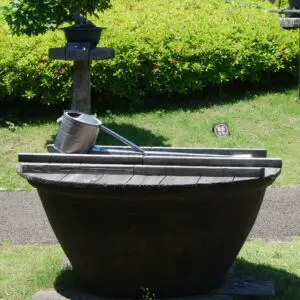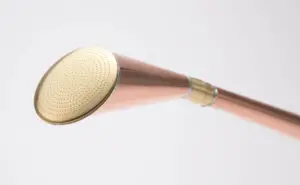Watering is said to be the most difficult part of growing bonsai and choosing tools for irrigation is important.
The best bonsai watering cans should have a longer spout and a rose full of small holes because they sprinkle water gently in an adequate amount. A hose with a fine spray nozzle can also be used when growing bonsai in large numbers.
Traditional bonsai watering can
Names of parts
A bonsai watering can has a body that contains water with a nozzle called a “spout”. At the end of the spout, a sprinkler attachment called a “rose” is placed to break water into small droplets.
Traditional bonsai watering can
(Source: Negishi Industry)
Material
Traditional bonsai watering can is made of copper or stainless steel. Copper watering can is expensive and heavy especially when filled with water, but it looks nice. Stainless steel watering cans, on the other hand, are lightweight, less expensive and less likely to deteriorate over time.
It is said that copper bonsai watering cans prevent rainwater from rotting because of the anti-bacterial ability of the material, and have a positive effect on the growth of bonsai moss thanks to copper ions that dissolve in water.
Spout (nozzle)
The traditional bonsai watering can has a very long spout. Its long spout allows more water pressure, enabling a large amount of water to come out evenly.
Rose (sprinkler attachment)
(Source: Negishi Industry)
There are two types of rose for bonsai watering cans: round-cut and diagonal-cut. The round cut has strong water pressure that comes out straight. The diagonal cut releases water gently and diagonally.
The size of the rose can be small, medium and large. A smaller rose is better for watering small bonsai because the water is sprinkled gently and finer adjustments are possible. Also, water touches the bonsai trees and soil softly with a small rose, which is good because you do not need to worry about tripping small bonsai trees with water or splashing the new soil out of the pots.
The number of holes and the size of the rose are also important. A rose with finer holes in a large number is better for bonsai because enough amount of water comes out gently in small droplets.
Best bonsai watering can
What makes a good bonsai watering can?
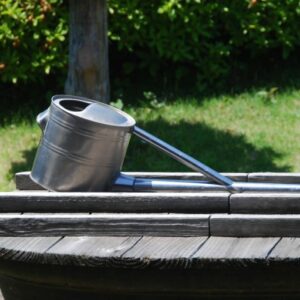
The best bonsai watering cans are ones that sprinkle water gently in an adequate amount. So, a watering can with a longer spout and a rose full of small holes is the best.
It is better if the ideal watering can is made of durable material, and are comfortable to hold even when full. If it is affordable, even better. But these are not musts.
Material-wise, a plastic watering can is the cheapest in terms of price, but it degrades in a few years if exposed to sunlight. Stainless steel watering can is a little more expensive, but it is less likely to deteriorate and is durable and light.
It is better to have different types of roses, small to large, and change them depending on the weather, and the type and size of bonsai trees.
Can a hose be used for bonsai?
A hose with a fine spray nozzle can be used and is a common practice among bonsai growers when growing bonsai in large numbers.
The most difficult part of growing bonsai is said to be watering. As each bonsai needs different amounts of water, it is best to check the soil and give the amount it needs. This is doable when you have a couple of bonsai trees but becomes difficult if you have a lot of trees or you just do not have time to check each pot.
Naturally, it is common to attach a nozzle to the hose and water them all at once if you are growing a lot of bonsai trees.
Keep in mind that the amount of water a bonsai tree needs varies depending on the shape of the bonsai, where it is placed, and its type. If the soil is covered with moss or dried quite heavily, sprinkling water from above only once might not be enough.
It is important to check if all your bonsai trees are given an adequate amount of water if you use a hose to water them.
What kind of water is best for bonsai?
Rainwater is always the first choice for irrigating bonsai trees because it is most likely acidic and fits within the optimum soil pH range of bonsai trees’ growth.
If you are wondering if tap water can be used, please check the following post.

